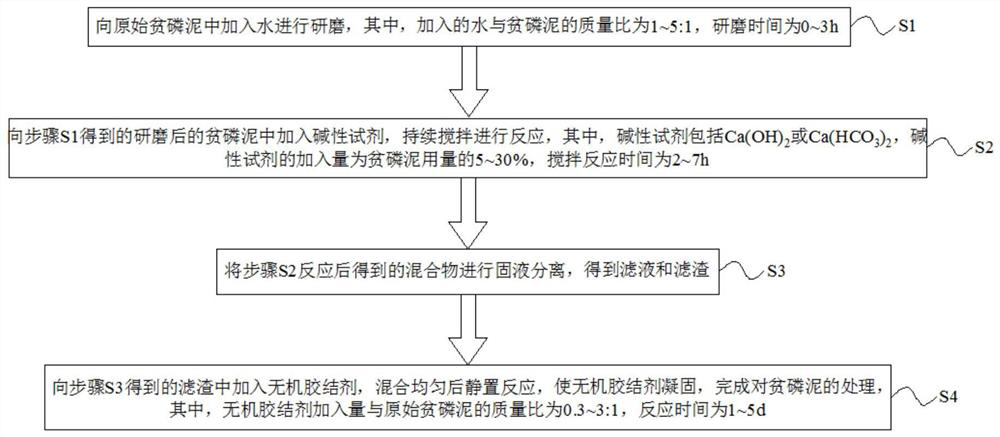Fluorine-reducing and phosphorus-removing inorganic cementation stabilization treatment process based on phosphorus-poor mud
A treatment process and inorganic glue technology, which is applied in the field of inorganic cementation stabilization treatment process based on phosphorus-poor mud reduction and phosphorus removal, can solve the problems of destroying the surrounding ecological environment, soil and groundwater pollution, waste of land resources, etc., and accelerate the oxidation reaction. process, shorten the reaction time, reduce the effect of mass transfer resistance
- Summary
- Abstract
- Description
- Claims
- Application Information
AI Technical Summary
Problems solved by technology
Method used
Image
Examples
Embodiment Construction
[0027] The present embodiment proposes a treatment process based on phosphorus-poor mud for defluoridation, phosphorus removal, inorganic cementation, stabilization and solidification, including the following steps:
[0028] S1: Add water to the original phosphorus-poor mud for grinding, wherein the mass ratio of the added water to the phosphorus-poor mud is 1-5:1, and the grinding time is 0-3 hours;
[0029] It should be noted that since the untreated phosphorus sludge has obvious agglomeration phenomenon, and the elemental phosphorus in the phosphorus sludge is mostly wrapped by a colloidal structure, so that the subsequent treatment can be more efficient and thorough, it is necessary to first remove the phosphorus Add appropriate amount of water to the mud for wet grinding. In this example, the mass ratio of added water to phosphorus-poor mud is 2:1, and the grinding time is 1 h. The particles in the phosphorus sludge are rubbed and collided by the grinding steel balls dur...
PUM
 Login to View More
Login to View More Abstract
Description
Claims
Application Information
 Login to View More
Login to View More - R&D
- Intellectual Property
- Life Sciences
- Materials
- Tech Scout
- Unparalleled Data Quality
- Higher Quality Content
- 60% Fewer Hallucinations
Browse by: Latest US Patents, China's latest patents, Technical Efficacy Thesaurus, Application Domain, Technology Topic, Popular Technical Reports.
© 2025 PatSnap. All rights reserved.Legal|Privacy policy|Modern Slavery Act Transparency Statement|Sitemap|About US| Contact US: help@patsnap.com

